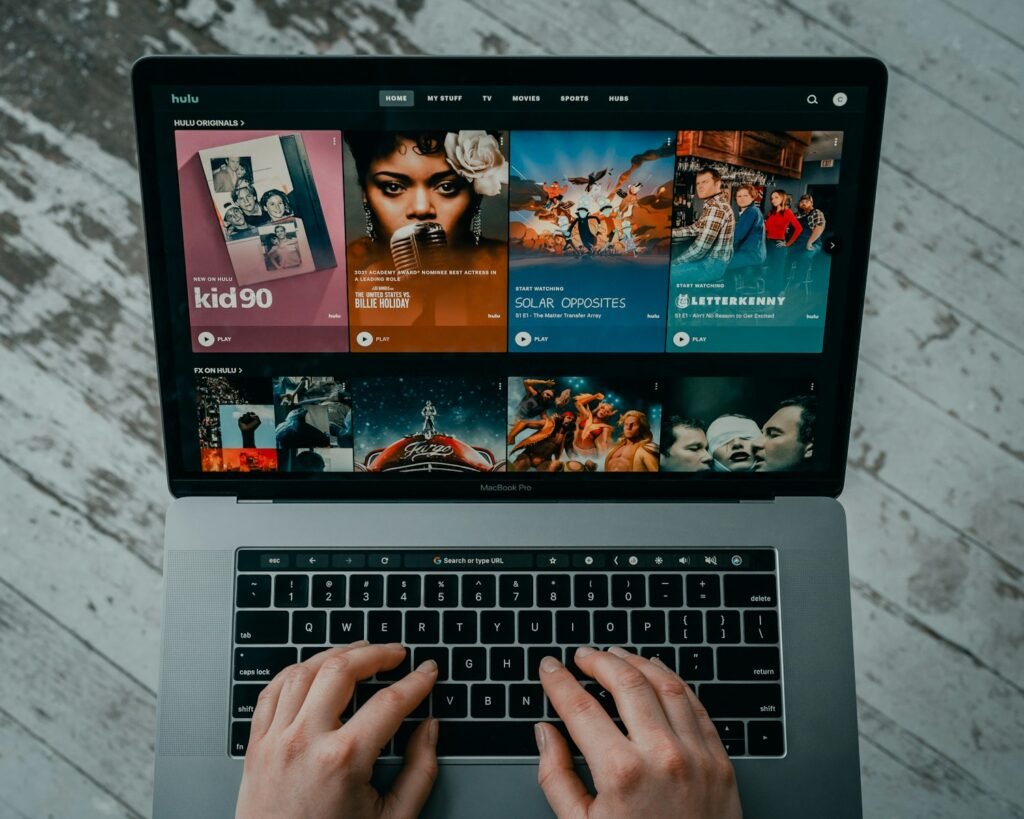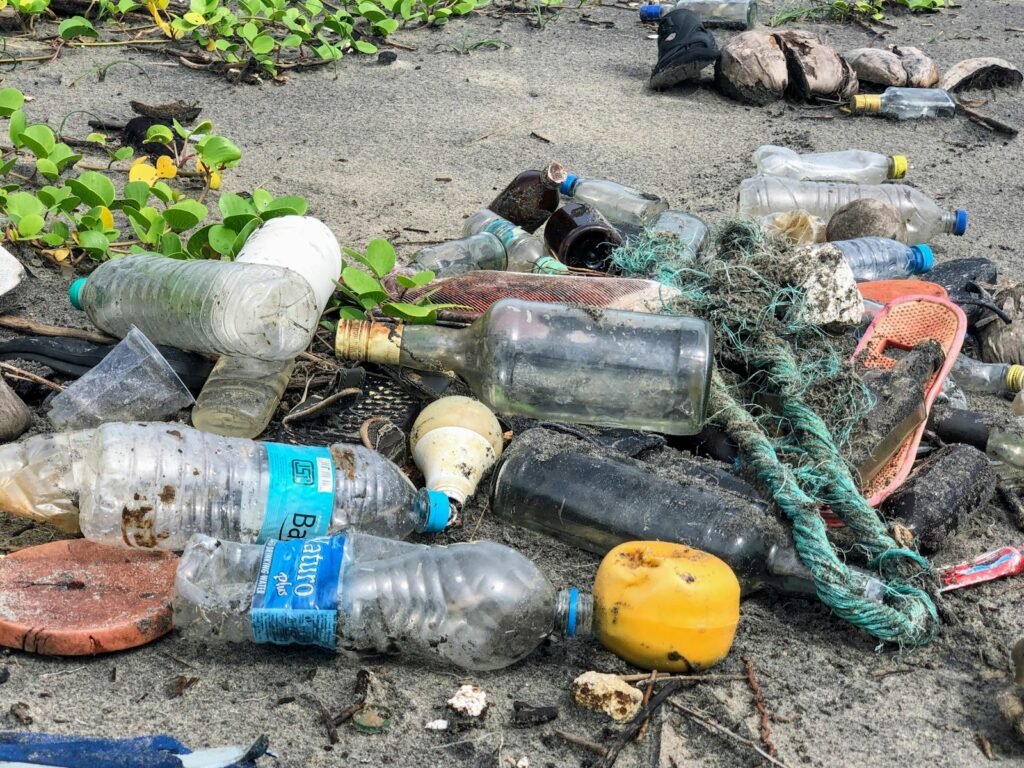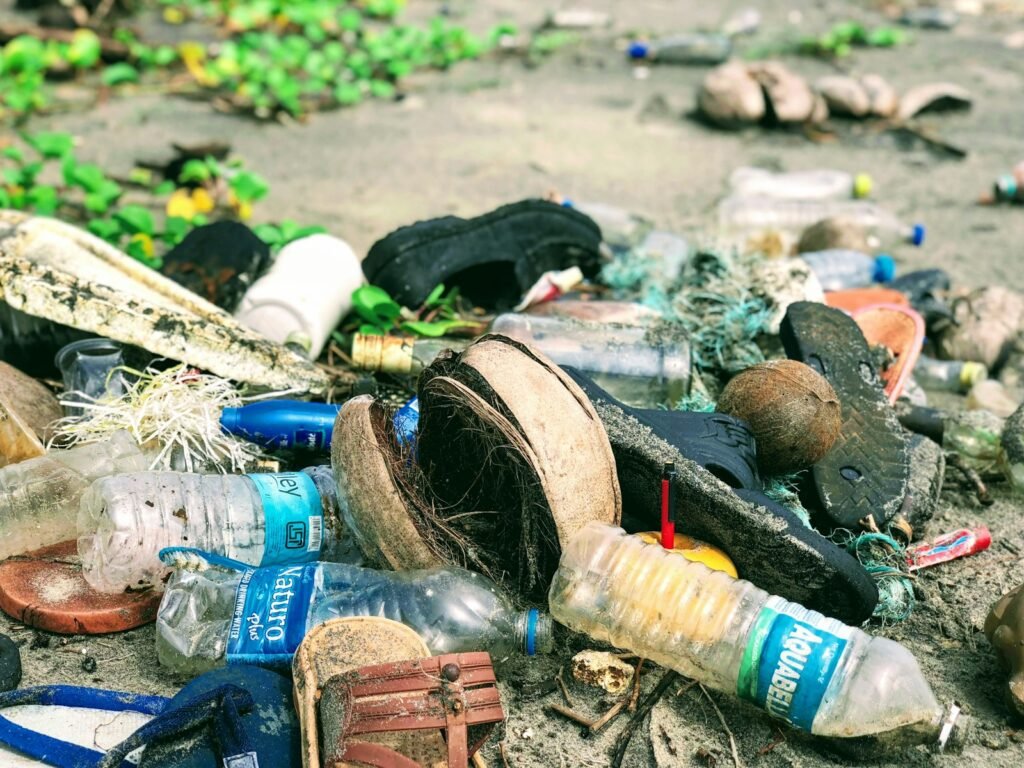You’re curled up on the couch. Headphones snug, playlist queued, episode queued. It’s a moment of calm—your favorite show playing, a new podcast unfolding, a series you’ve been waiting to watch finally streaming. It feels seamless. Effortless. Like nothing is being used, nothing is being wasted.

But behind the screen, a vast network of servers hums continuously. Every stream, every download, every click triggers a chain of energy use, data movement, and hardware strain. The digital world isn’t free. It’s powered by electricity—often from fossil fuels—and built on physical infrastructure that extracts rare minerals, generates e-waste, and demands constant upgrades.
Streaming and podcasting aren’t neutral. They’re part of a system that contributes significantly to carbon emissions, energy consumption, and environmental degradation. The comfort you enjoy comes at a cost—hidden, but real.
How Streaming Actually Works (And Why It’s Energy-Intensive)
When you press play on a show, your device sends a request through the internet to a data center. That center, often located thousands of miles away, retrieves the file and sends it back to you in real time.
This process happens in milliseconds—but it’s not magic. It’s energy. Each data transfer requires power to move, store, and deliver content. Data centers house tens of thousands of servers, running 24/7, cooling systems constantly operating, and networks of fiber-optic cables transmitting information at near-light speed.
These centers consume massive amounts of electricity. They are among the most energy-hungry facilities on Earth. And while some companies claim to use renewable energy, the reality is that most global data infrastructure still relies heavily on coal, gas, and other non-renewable sources.
Even when the power is clean, the physical footprint remains. Cooling systems require water, and server farms often occupy large swaths of land, sometimes in ecologically sensitive areas.
The Carbon Footprint of Every Stream
Streaming video accounts for a growing share of global carbon emissions—roughly 1% of the world’s total, according to recent estimates. That’s equivalent to the entire aviation industry. And it’s rising.
Why? Because every second of video playback demands energy at multiple stages:
- Encoding and compression
- Transmission across networks
- Storage in data centers
- Decoding and playback on your device
High-definition content—especially 4K and HDR—uses up to five times more data and energy than standard definition. Even a single 30-minute episode of a show in HD can generate over 100 grams of CO₂. Multiply that by thousands of viewers, and the impact is staggering.
Podcasts, while smaller in data size, aren’t immune. The more you stream them, the more data is pushed through the network. The more you download, the more storage is used. And the more devices you use to access them, the greater the cumulative footprint.
The Real Cost of Your Devices
You don’t just stream content—you own devices to do it. Smartphones, tablets, laptops, smart speakers, headphones. Each one is a product of industrial-scale manufacturing, resource extraction, and complex supply chains.
The production of a single smartphone requires hundreds of pounds of raw materials, including lithium, cobalt, nickel, copper, and rare earth elements. Mining these materials causes habitat destruction, water contamination, and significant carbon emissions. Entire regions are altered to extract just a few grams of metal.
Manufacturing the device itself is energy-intensive. It takes more electricity to produce a new phone than it does to run it for years. And once it’s no longer useful, most end up in landfills.
The average smartphone has a lifespan of under three years. Every time you upgrade to a new device, you’re contributing to a cycle of waste and extraction. And when that old device is discarded, it becomes part of the growing global e-waste crisis—over 50 million metric tons annually, with less than a quarter being properly recycled.
The Hidden Lifecycle of Digital Media
It’s easy to think that digital content is ephemeral—gone once you stop watching. But every file exists somewhere. Every podcast episode is stored on servers. Every video is backed up across multiple locations.
This redundancy is necessary for reliability and speed, but it means that even content you never watch still consumes energy. Files are duplicated across data centers to ensure fast delivery. They’re backed up in case of failure. They’re cached for future use.
The more content you consume, the more data is stored, transmitted, and maintained. And each action—pause, rewind, skip, repeat—requires new data processing and server interaction.
Even your device’s battery degrades over time. Every charge cycle adds wear. Every update requires new processing. The longer you use a device, the more energy it consumes per task.
How to Stream More Sustainably (Without Giving Up Your Favorites)
You don’t need to stop streaming or listening to podcasts to be eco-conscious. But you can make your habits more sustainable with simple, intentional changes.
1. Lower Your Video Quality Settings
The biggest single change you can make: switch from high definition to standard definition. HD and 4K require far more data and energy to deliver. Even a small reduction in quality can cut energy use by 50% or more.
Most streaming platforms allow you to adjust video quality manually. Set it to “Standard” or “Auto” (which adjusts based on your connection). You’ll likely still enjoy your show—but with a significantly lower environmental cost.
2. Download Instead of Stream
When you download a podcast or show, you’re removing the need for repeated data transfers. The file is stored locally on your device, so you don’t have to request it every time you want to watch.
This reduces the load on data centers and saves energy. It also helps during poor internet connections and avoids buffering—making it a win-win.
Just remember to download only what you’ll actually use. Avoid hoarding content you won’t listen to.
3. Use Your Devices More Efficiently
- Turn off Wi-Fi and Bluetooth when not in use.
- Use wired connections (Ethernet) instead of Wi-Fi when possible—wired is more efficient.
- Keep your device in good condition—clean the screen, update software, avoid extreme temperatures.
- Use power-saving modes and screen dimming.
These small adjustments reduce the energy your device uses during playback.
4. Extend Your Device’s Lifespan
The most sustainable device is the one you already own. Avoid upgrading for minor improvements. Repair it instead.
- Use protective cases and screen protectors.
- Replace batteries when needed.
- Learn to fix common issues—many problems can be solved with online guides.
- When it’s truly broken, recycle it responsibly through certified e-waste programs.
The longer a device lasts, the fewer new devices need to be produced.
5. Be Mindful of Your Consumption Habits
- Pause before starting a new show. Ask: “Do I really want to watch this?”
- Avoid autoplay features that start the next episode without your input.
- Skip ads and avoid unnecessary buffering.
- Limit bingeing—each episode adds up.
Every stream is a small environmental decision. Consciously choosing when and how you consume content reduces the collective impact.
The Power of Systemic Change and Consumer Choice
Individual actions matter. But so does pressure on the systems that enable this kind of consumption.
Demand transparency. Support companies that report their carbon emissions and invest in renewable energy. Advocate for green data centers. Push for better device design—modular, repairable, built to last.
You don’t need to be perfect. But you can be more intentional. You can be part of a shift toward digital habits that don’t sacrifice the planet.
You Can Enjoy What You Love—Without Paying the Planet’s Price
Streaming and podcasting are part of modern life. They’re tools for connection, education, and joy. But they come with environmental consequences—ones that are too often overlooked.
The good news? You don’t have to choose between entertainment and sustainability. You can enjoy your favorite shows, stay informed with your favorite podcasts, and still reduce your digital footprint.
It starts with awareness. Then intention. Then action.
The next time you press play, remember: every stream has a cost. But with mindful choices, that cost can be minimized—so you can enjoy the moment, knowing you’re not paying the planet’s price.







